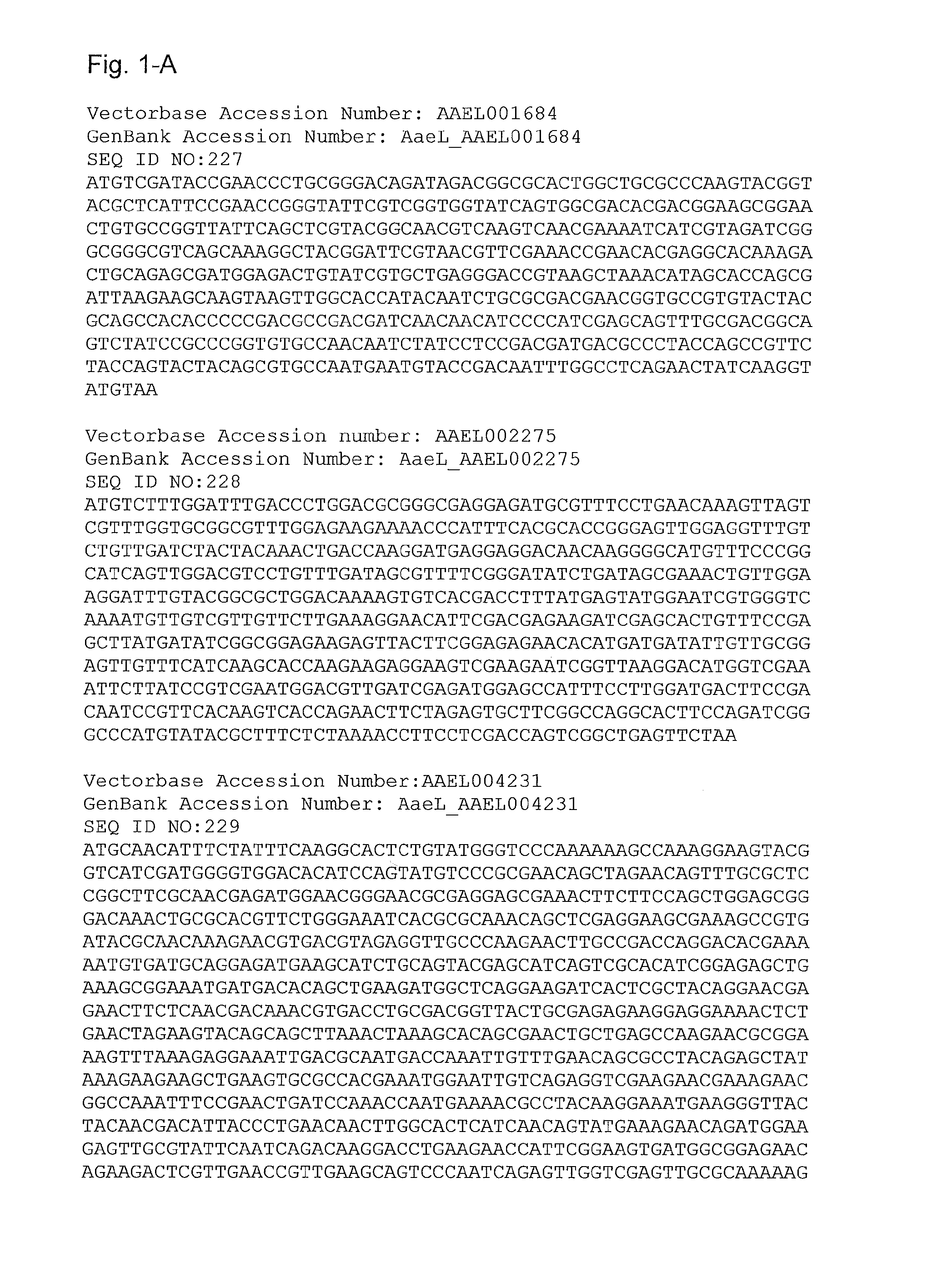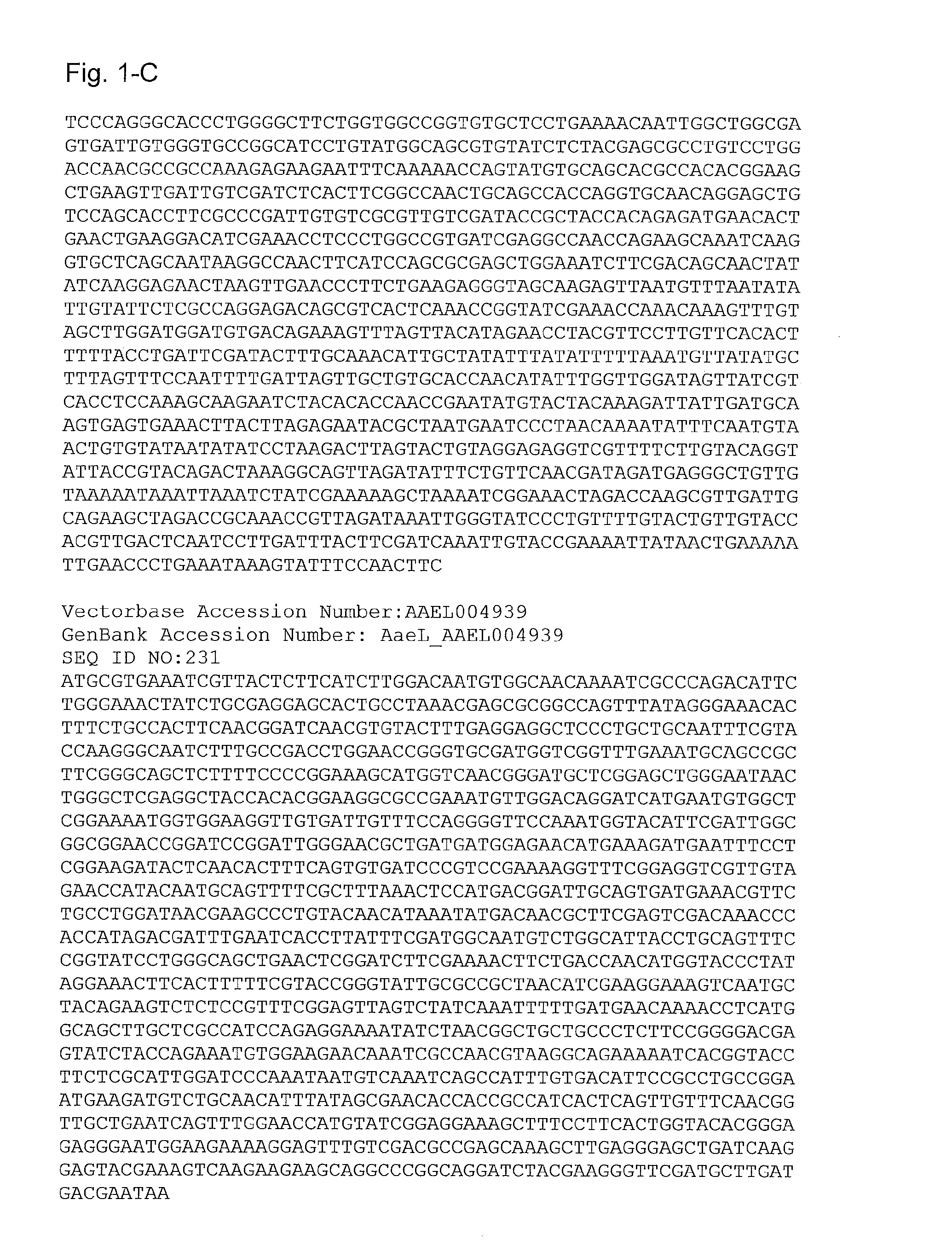Biological control of insects
a technology of biological control and insects, applied in the field of biological control of insects, can solve the problems of reducing the ability of insects to compete for mates, affecting the quality of life of insects, and not being used extensively
- Summary
- Abstract
- Description
- Claims
- Application Information
AI Technical Summary
Benefits of technology
Problems solved by technology
Method used
Image
Examples
example 1
[0072]To produce sterile insects without the use of radiation, non-specific chemosterilant compounds, or transgenic insects, a method of sterilizing insects using orally-administered double-stranded RNA (RNA) delivered to the larval stages of the insects was developed. In this invention, several genes are identified, that when targeted by RNAi, can sterilize male insects. Until this study, it was not clear whether ingested dsRNAs would be effective in silencing genes in all tissues beyond the gut, and in particular, the gonads of the insects. In addition to silencing genes associated with male (and female) fertility, it was also determined that the sex-ratio can be altered by feeding larvae with dsRNA targeting the female variant of the doublesex gene, which is involved in sex differentiation. Combining both testis-specific and female-specific dsx dsRNAs, it was possible to produce a population of mosquitoes that were almost entire male and either fully sterile or with severely redu...
PUM
| Property | Measurement | Unit |
|---|---|---|
| Biological properties | aaaaa | aaaaa |
Abstract
Description
Claims
Application Information
 Login to View More
Login to View More - R&D
- Intellectual Property
- Life Sciences
- Materials
- Tech Scout
- Unparalleled Data Quality
- Higher Quality Content
- 60% Fewer Hallucinations
Browse by: Latest US Patents, China's latest patents, Technical Efficacy Thesaurus, Application Domain, Technology Topic, Popular Technical Reports.
© 2025 PatSnap. All rights reserved.Legal|Privacy policy|Modern Slavery Act Transparency Statement|Sitemap|About US| Contact US: help@patsnap.com



